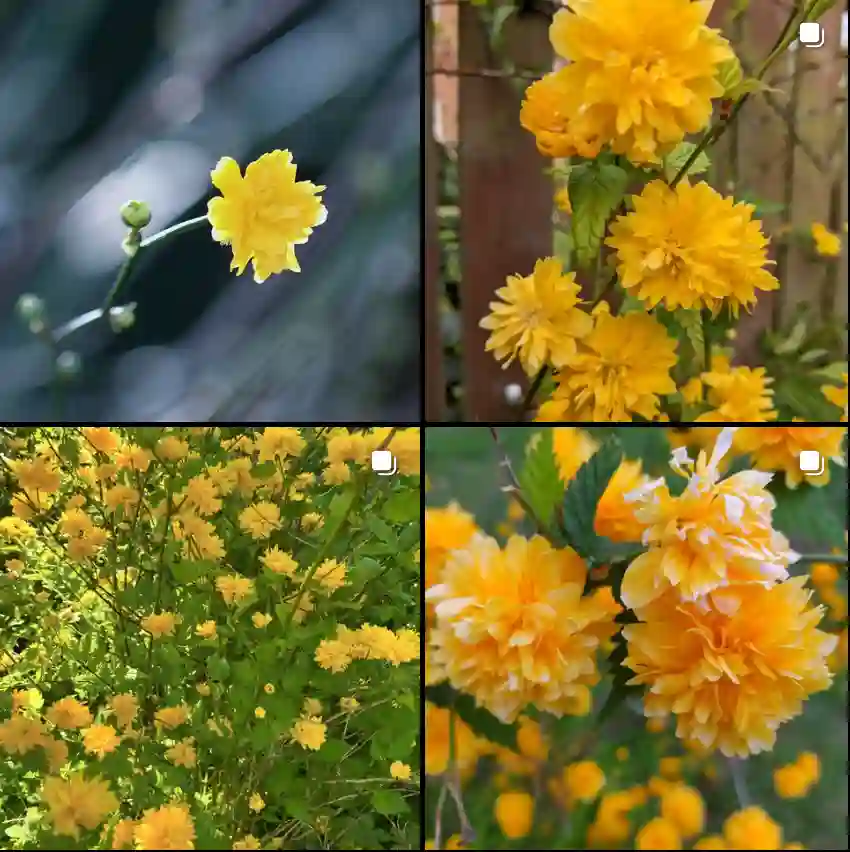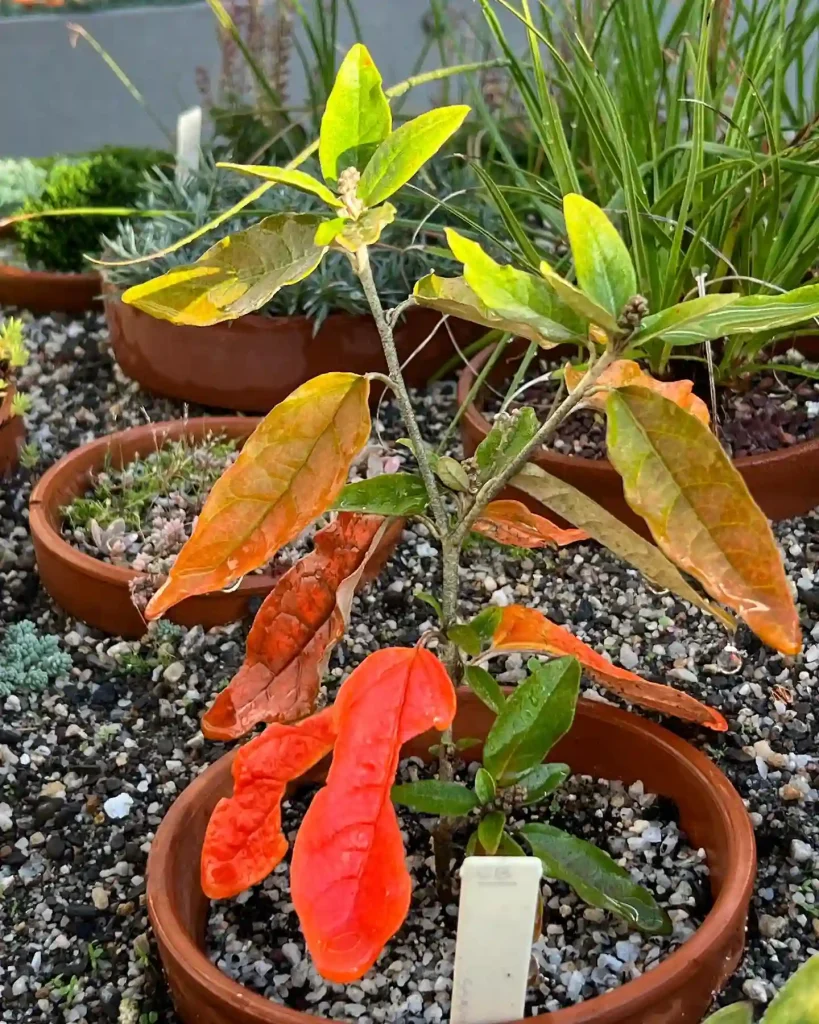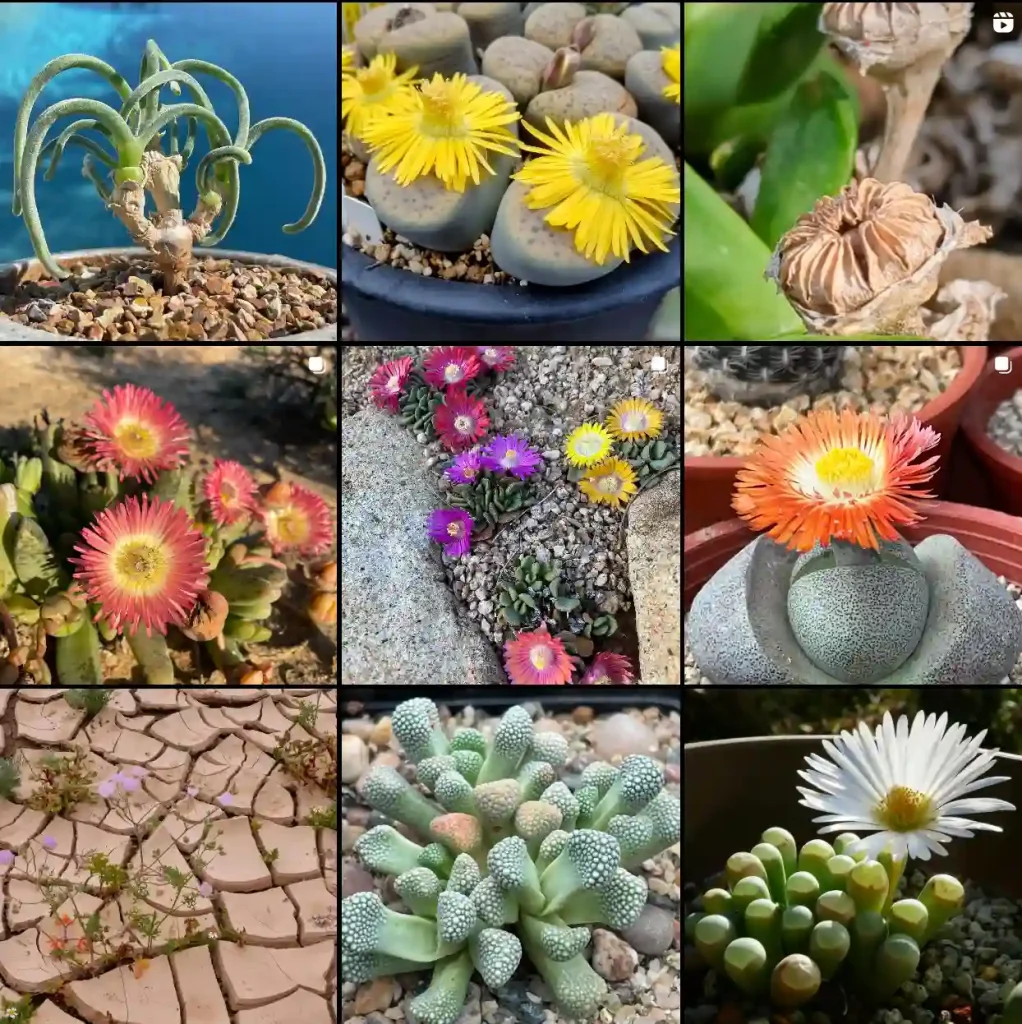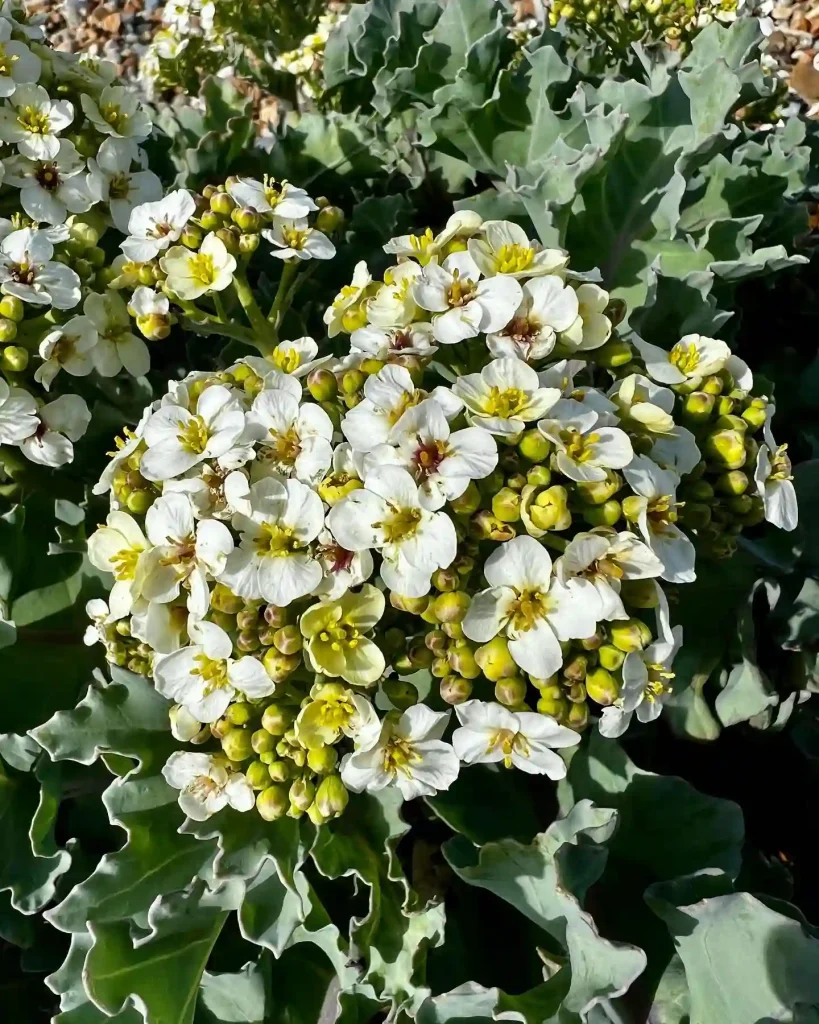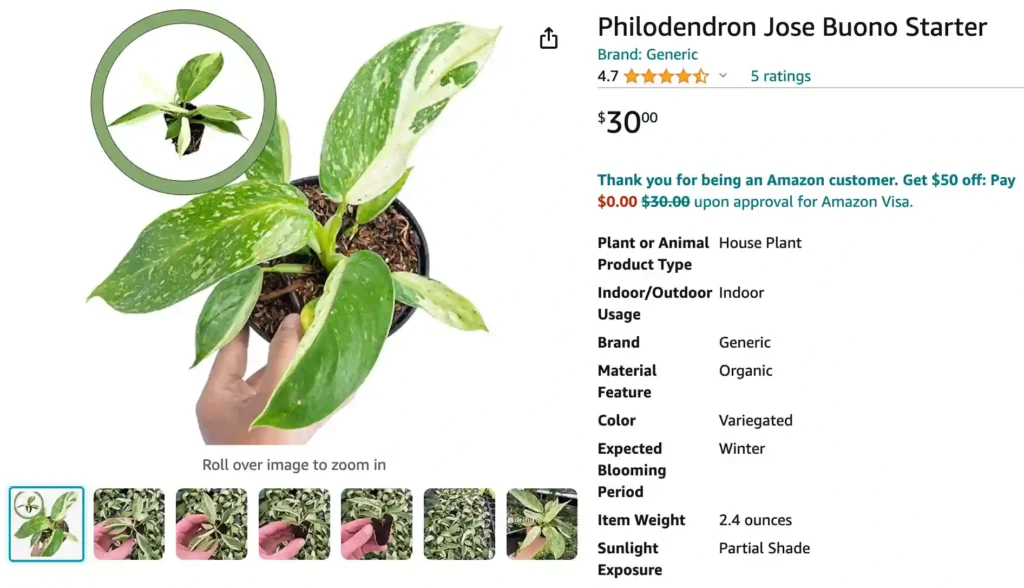
1. Introduction to Philodendron Jose Buono: The Variegated Strapleaf
1.1. What is Philodendron ‘Jose Buono’?
The Philodendron ‘Jose Buono’ is a stunning and highly prized hybrid cultivar within the Philodendron genus. It is particularly distinguished by its remarkable and often irregular variegation, which features bold splashes, speckles, and streaks of cream, yellow, or white against a backdrop of large, glossy, deep green, elongated, strap-like leaves. This captivating patterning, combined with its impressive size and vigorous climbing habit, makes it a true showstopper and a prized addition to any indoor plant collection. Named after its discoverer, Jose Buono, this Philodendron offers a unique blend of elegance and tropical grandeur.
1.2. Reasons for its Appeal
Philodendron ‘Jose Buono’ captivates plant enthusiasts for several compelling reasons:
- Spectacular Variegation: Its striking cream, yellow, or white variegation against large, dark green leaves creates an incredibly artistic and unique display.
- Impressive Size: Its ability to produce very large leaves contributes to its dramatic presence, making it a focal point.
- Unique Leaf Shape: The elongated, strap-like form of its leaves adds an elegant and distinct aesthetic.
- Collector’s Item: Its exceptional beauty, combined with its size potential and desirable variegation, makes it highly sought after by Aroid collectors.
- Vigorous Climbing Habit: As a natural climber, it readily ascends moss poles or trellises, allowing for impressive vertical growth and maximizing leaf size.
2. Origins and Distinguishing Characteristics
2.1. Origins
The Philodendron ‘Jose Buono’ is a cultivated hybrid, believed to have originated in South America, specifically in Brazil. It is not a naturally occurring wild species but a selection or hybrid developed for its striking variegated traits. Its genetic lineage traces back to various Philodendron species native to the tropical rainforests of Central and South America. Its development is a testament to horticultural efforts to create visually stunning and stable cultivars for indoor cultivation.
2.2. Leaf Morphology and Variegation
The leaves of Philodendron ‘Jose Buono’ are its most defining characteristic. They are typically:
- Size: Very large and can reach impressive lengths when mature and given adequate support.
- Shape: Elongated and strap-like, sometimes with a slightly undulating margin, tapering to a point.
- Color & Variegation: The base color is a rich, glossy deep green, beautifully adorned with irregular splashes, sectors, or streaks of cream, yellow, or white variegation. The patterns are unique to each leaf and can vary widely in coverage and intensity, sometimes appearing as large blocks or small speckles.
- Texture: They have a smooth, glossy texture. The leaves are generally entire (undivided) and contribute to its lush, imposing appearance.
2.3. Growth Habit and Rate
Philodendron ‘Jose Buono’ is a vigorous climbing Aroid. It produces strong aerial roots that readily cling to surfaces, allowing it to ascend moss poles, trellises, or other structures. Providing vertical support is highly recommended, as it encourages the plant to produce larger, more mature leaves with enhanced variegation and its characteristic elongated shape. Without support, it tends to sprawl or trail, resulting in smaller, less developed leaves. Its growth rate is generally moderate to fast under optimal conditions, particularly during the warmer growing seasons, making it a rewarding plant for those who enjoy seeing noticeable progress.
2.4. Toxicity
Like most other Philodendron species, Philodendron ‘Jose Buono’ is considered toxic to pets (cats, dogs) and humans if ingested. It contains calcium oxalate crystals, which can cause irritation and swelling of the mouth, throat, and digestive tract, leading to discomfort, vomiting, and difficulty swallowing. It is advisable to keep this plant out of reach of pets and small children.
2.5. Comparison to Similar Philodendrons (Florida Beauty, Gloriosum, Billietiae)
Philodendron ‘Jose Buono’ is quite distinctive due to its combination of large, elongated, strap-like leaves and specific variegation. However, it can be compared to other large-leafed or variegated Philodendrons.
- Philodendron ‘Jose Buono’: Characterized by large, elongated, strap-like leaves with cream, yellow, or white variegation. It is a vigorous climbing Philodendron.
- Philodendron ‘Florida Beauty’ (often a variegated form of P. pedatum or a complex hybrid): Features deeply lobed leaves (often multi-fingered like oak leaves) with yellow, cream, or white variegation. Its leaf shape is very different (lobed vs. strap-like) from ‘Jose Buono’, although both are variegated climbers.
- Philodendron gloriosum: Known for its large, heart-shaped, velvety, dark green leaves with prominent white or light green veins. It is a terrestrial, crawling Philodendron, not a climber, and its variegation is primarily in the veins, not broad splashes. Its leaf shape and growth habit are distinctly different.
- Philodendron billietiae: Has large, elongated, wavy-edged, deep green leaves with prominent orange, reddish, or brownish petioles. While its leaves are elongated, they lack the broad splashes of variegation and are not typically strap-like. It is a climbing Philodendron.
The unique combination of its very large, elongated, strap-like leaves with broad splashes of cream/yellow/white variegation clearly distinguishes Philodendron ‘Jose Buono’.
3. Comprehensive Care Guide: Nurturing Your Variegated Strapleaf
Cultivating a thriving Philodendron ‘Jose Buono’ demands meticulous care to highlight its exquisite foliage and impressive size, mimicking its tropical ancestry.
Table 1: Quick Care Guide for Philodendron Jose Buono
| Care Factor | Requirement Description |
|---|---|
| Light | Bright, indirect light (e.g., North/East window, filtered South/West). Crucial for variegation. Avoid direct harsh sun. |
| Temperature | Ideal range: 18-27°C (65-80°F). Protect from cold drafts. |
| Humidity | High humidity (60% or above preferred). Essential for pristine leaves and unfurling. |
| Watering | Water when top 1 inch of soil is dry. Ensure soil remains moist but not soggy. Ensure good drainage. Avoid overwatering. |
| Soil | Well-draining, airy, rich, organic mix (aroid mix, or peat-based potting mix + perlite + orchid bark). |
| Fertilization | Balanced liquid fertilizer, diluted, monthly (or every 4-6 weeks) in spring/summer. Reduce/withhold in fall/winter. |
| Pruning | Remove old/damaged/reverted leaves, prune for shape/size. |
| Repotting | Every 1-2 years, or when root-bound, in spring. Increase pot size slightly. |
| Support | Provide a moss pole or trellis for climbing. |
3.1. Light Requirements
Bright, indirect light is paramount for Philodendron ‘Jose Buono’ to develop and maintain its spectacular variegation and promote healthy growth. Place your plant near a north or east-facing window for ample indirect light. For south or west-facing windows, use a sheer curtain to diffuse intense light or place the plant a few feet away from the window. Direct, harsh sunlight can easily scorch its delicate variegated leaves, leading to irreversible brown spots and dulling its vibrant colors. Conversely, insufficient light can lead to slower growth, smaller leaves, leggy stems, and a dulling or reduction of variegation, causing the variegated areas to become less prominent or disappear. Regularly rotating the plant ensures even light exposure and balanced growth.
3.2. Temperature and Humidity
As a plant from warm, humid climates, Philodendron ‘Jose Buono’ prefers consistently warm temperatures, ideally ranging from 18-27°C (65-80°F). It’s crucial to protect it from cold drafts and sudden temperature fluctuations, as temperatures below 15°C (59°F) can stress the plant, slow growth, and cause leaf damage. Avoid placing the plant near open doors, air conditioning vents, or heating units.
High humidity (60% or above) is highly preferred by Philodendron ‘Jose Buono’. Optimal growth and pristine leaf appearance, especially for new leaves to unfurl without damage and to maintain vibrant variegation, are achieved with higher moisture levels. Signs of insufficient humidity might include crispy brown leaf edges or tips, or new leaves struggling to unfurl properly and becoming distorted or tearing. You can increase humidity by using a room humidifier. Placing the pot on a pebble tray filled with water (ensuring the pot itself doesn’t sit in the water) can also help create a more humid microclimate. Regular misting can provide a temporary boost.
3.3. Watering Practices
Proper watering is critical for Philodendron ‘Jose Buono’. It prefers its soil to be consistently moist but not soggy. Water deeply when the top 1 inch (2.5 cm) of soil feels dry to the touch. Ensure that the pot has excellent drainage holes and that any excess water drains out completely from the bottom. Never allow the plant to sit in standing water, as this is the primary cause of root rot. Overwatering is a common issue. Water more frequently during the growing season and less in winter.
The frequency of watering will depend on environmental factors like light, temperature, and humidity, as well as the pot size and soil mix. Expect to water more often during the warmer, active growing months (spring and summer), typically about once a week. During the cooler, dormant months of fall and winter, reduce watering frequency significantly, allowing the soil to dry out more thoroughly between waterings. Drooping leaves can indicate both underwatering and overwatering (due to root damage).
3.4. Optimal Soil Mix and Repotting
A well-draining, airy, and nutrient-rich potting mix is essential for Philodendron ‘Jose Buono’. This mimics the loose, organic matter it would find in its native climbing environment. An ideal mix should promote good aeration while retaining sufficient moisture. A suitable blend, often referred to as an “aroid mix,” can include:
- High-quality indoor potting soil (e.g., a peat-based potting mix)
- Perlite or pumice (approximately 20-30%) for excellent drainage and aeration
- Orchid bark (approximately 20-30%) for chunkiness and improved air circulation
- Coco coir (optional, smaller amounts) for moisture retention
Repotting: Repot your Philodendron ‘Jose Buono’ typically every 1-2 years, or when you notice it has become root-bound (roots growing out of drainage holes, water running straight through the pot too quickly, stunted growth). Spring is the best time to repot. Choose a new pot that is only 1-2 inches larger in diameter than the previous one, ensuring it has ample drainage.
3.5. Fertilization Strategies
During its active growing season (spring and summer), fertilize your Philodendron ‘Jose Buono’ monthly (or every four to six weeks) with a balanced liquid fertilizer, diluted to half the recommended strength. This provides the necessary nutrients to support vigorous growth and maintain its lush foliage and vibrant variegation. Reduce or completely stop fertilizing during the fall and winter months when the plant’s growth naturally slows. Over-fertilization can lead to salt buildup in the soil, which can burn the roots and cause leaf damage (e.g., crispy brown tips). Always water the plant thoroughly before applying fertilizer to protect the roots.
3.6. Pruning and Maintenance
Regular pruning is beneficial for Philodendron ‘Jose Buono’ to maintain its shape, manage its impressive size, and remove any unhealthy foliage. Remove any yellowing, brown, or damaged leaves using clean, sharp scissors or pruning shears. It’s also important to prune off any entirely green sections of the plant (reversions) to encourage the variegated growth to continue, as all-green portions grow faster and can outcompete the variegated parts. Pruning can be done during the active growing season. Regularly wipe the leaves gently with a soft, damp cloth to remove dust, which improves the plant’s ability to photosynthesize and keeps the variegation looking crisp. Providing a moss pole or trellis is highly recommended, as this climbing plant benefits from vertical growth, leading to larger and more robust leaves.
4. Propagation Techniques: Expanding Your Collection
Propagating Philodendron ‘Jose Buono’ is possible, primarily through stem cuttings. The best time for propagation is during the spring or early summer when the plant is actively growing.
4.1. Stem Cuttings
- Select a Healthy Stem: Choose a healthy, mature stem section that has at least one node (the bump on the stem where a leaf or aerial root emerges) and preferably one or two healthy leaves. Crucially, select a section that includes both green and variegated parts to ensure the new plant inherits the desired pattern. Avoid taking cuttings that are entirely white (all-white ‘alba’ cuttings often struggle to survive as they lack chlorophyll) or entirely green (which may revert).
- Sterilize Tools: Always use clean, sharp, and sterilized pruning shears or a knife to make your cuts. This prevents the spread of diseases.
- Make the Cut: Cut the stem just below a node. Remove any lower leaves that would be submerged in your chosen rooting medium to prevent rot.
- Rooting Hormone (Optional): Applying a rooting hormone (powder or gel) to the cut end can stimulate faster and more robust root development.
- Rooting Medium Options:
- Water Propagation: Place the cutting in a clear jar with fresh water, ensuring the node is fully submerged. Change the water every few days to keep it clean and prevent bacterial growth. Roots typically begin to form within a few weeks.
- Sphagnum Moss: Plant the cutting in moist, but not soggy, sphagnum moss. This medium provides excellent aeration and moisture retention, often leading to robust root development.
- Soil: You can also plant the cutting directly into a small pot filled with a well-draining, airy potting mix suitable for aroids. Keep the soil consistently moist but not soggy.
- Provide Optimal Environment: Place your cuttings in a warm location that receives bright, indirect light. High humidity (e.g., within a propagation box or covered with a clear plastic bag to create a mini-greenhouse effect) will significantly accelerate the rooting process.
- Potting Up: Once the roots are a few inches long (for water or moss propagation), or significant new leaf growth is visible (for soil propagation), your new plant is ready to be transitioned to a larger pot with its permanent potting mix.
5. Troubleshooting Common Issues: Pests, Diseases, and Environmental Stress
While generally robust, Philodendron ‘Jose Buono’ can encounter a few common problems if its specific care requirements are not met. Prompt identification and action are crucial for maintaining its health.
Table 2: Common Problems & Troubleshooting for Philodendron Jose Buono
| Problem | Symptoms | Solutions/Treatment |
|---|---|---|
| Yellowing Leaves | Older, lower leaves turning yellow. | Overwatering (most common), insufficient light, nutrient deficiency, natural aging. Adjust watering, fertilize, check roots for rot. |
| Brown Crispy Edges/Tips | Leaves browning and feeling crispy at edges, especially variegated parts. | Low humidity, underwatering, direct sun exposure. Increase humidity, adjust watering, move to indirect light. |
| Drooping Leaves | Leaves losing turgor, looking limp. | Underwatering (most common), severe overwatering (root rot), cold shock. Check soil moisture, inspect roots, ensure warmth. |
| Fading/Less Variegation (Reversion) | Lighter splashes become duller or disappear, new leaves greener, or all-green leaves appear. | Insufficient bright indirect light. Prune off all-green reversions immediately. |
| Stunted Growth/Smaller Leaves | Slow growth, new leaves are smaller than typical. | Insufficient light, nutrient deficiency, root-bound. Provide brighter light, fertilize, repot. |
| Leggy Growth | Long stems with sparse leaves. | Insufficient light. Move to brighter location. Prune to encourage bushier growth. |
| Pest Infestations | Visible pests (mealybugs, spider mites, thrips, scale), sticky residue, distorted growth. | Isolate plant, treat with insecticidal soap, neem oil, or appropriate pesticides. |
| Root Rot | Mushy stem base, black/brown, foul-smelling roots, yellowing/wilting. | Overwatering, poor drainage. Repot, trim rotten roots, improve drainage, reduce watering. |
| Fungal Leaf Spot | Various spots on leaves. | Improve air circulation, reduce humidity if too high, remove affected leaves. Fungicides if severe. |
5.1. Watering Issues
- Overwatering: This is the most common cause of problems. Symptoms include yellowing leaves (particularly older, lower ones), black/brown spots on leaves, a mushy stem near the soil line, and a foul, moldy smell from the soil. This eventually leads to root rot.
- Solution: Allow the top 1 inch (2.5 cm) of soil to dry out completely between waterings. Ensure the pot has excellent drainage. If root rot is suspected, unpot the plant, trim any rotted, mushy roots, and repot in fresh, well-draining soil. Reduce watering frequency.
- Underwatering: Symptoms include drooping or curled leaves, crispy brown edges or tips, and overall dull foliage. The plant may visibly droop when thirsty.
- Solution: Increase watering frequency. Ensure you are watering thoroughly so that water drains from the bottom of the pot, indicating the entire root ball has been moistened.
5.2. Light Issues
- Insufficient Light: Can lead to slower growth, smaller leaves, leggy stems (long gaps between leaves on the stem as it stretches for light), and a significant fading or reduction of variegation (lighter splashes become duller or disappear, new leaves greener, or all-green leaves appear).
- Solution: Move the plant to a location that receives bright, indirect light. Consider supplementing with a grow light if natural light levels are consistently low.
- Too Much Direct Light: Harsh direct sun, especially during midday, can cause leaf scorch. The variegated areas are particularly sensitive. Symptoms include brown, crispy patches or a faded appearance on the leaves.
- Solution: Relocate the plant to a spot with filtered light, or use sheer curtains to diffuse intense sunlight.
5.3. Humidity and Temperature Stress
- Low Humidity: Often causes the leaf edges or tips to turn brown and crispy, particularly on the variegated sections. New leaves might struggle to unfurl properly and could become distorted.
- Solution: Increase ambient humidity using a humidifier (aiming for 60% or above). Pebble trays or grouping plants together can also help. Regular misting can provide a temporary boost.
- Cold Stress: Exposure to temperatures below 15°C (59°F) can severely stress the plant, leading to leaf damage, wilting, and overall decline.
- Solution: Ensure the plant is in a consistently warm environment (18-27°C is ideal) and protected from cold drafts from windows or air vents.
5.4. Pests
Common houseplant pests like mealybugs, spider mites, thrips, and scale can occasionally infest Philodendron ‘Jose Buono’.
- Symptoms: Visible insects (mealybugs with white, cottony masses; spider mites with fine webbing; thrips with silver streaks and black frass; scale with hard, immobile bumps), sticky residue (honeydew), or speckled, distorted leaves.
- Solution: Regularly inspect your plant, especially the undersides of leaves and stem crevices. Isolate infested plants immediately. Treat with appropriate organic pest control methods such as insecticidal soap, neem oil, or by wiping pests off with an alcohol-dipped cotton swab. Increasing humidity can help deter spider mites.
5.5. Diseases
- Root Rot: This is a serious fungal disease, almost always a result of overwatering and poorly draining soil.
- Symptoms: Yellowing, wilting leaves (even when the soil is wet), a mushy stem near the soil line, and black/brown, foul-smelling roots.
- Solution: Immediately remove the plant from its pot. Carefully inspect the roots and prune away all affected (mushy, black) sections with sterilized shears. Repot the plant in fresh, well-draining aroid mix, and adjust your watering schedule to allow the soil to dry adequately between waterings.
- Fungal Leaf Spot: Can appear as various spots on the leaves.
- Solution: Improve air circulation around the plant, reduce overly high humidity, and remove affected leaves. Fungicides may be used in severe cases.
6. Conclusion: Enjoying Your Thriving Philodendron Jose Buono
Philodendron ‘Jose Buono’, with its captivating variegated strap-like leaves and impressive size, is a truly spectacular and rewarding plant to cultivate. By consistently providing it with bright, indirect light, appropriate watering, high humidity, stable warm temperatures, and a well-draining, airy soil mix along with adequate climbing support, you can ensure your ‘Jose Buono’ thrives. While it demands attention to its specific needs, the reward of nurturing its unique beauty and watching it flourish will bring immense satisfaction and a distinctive touch of tropical elegance to your indoor space.
If i die, water my plants!
